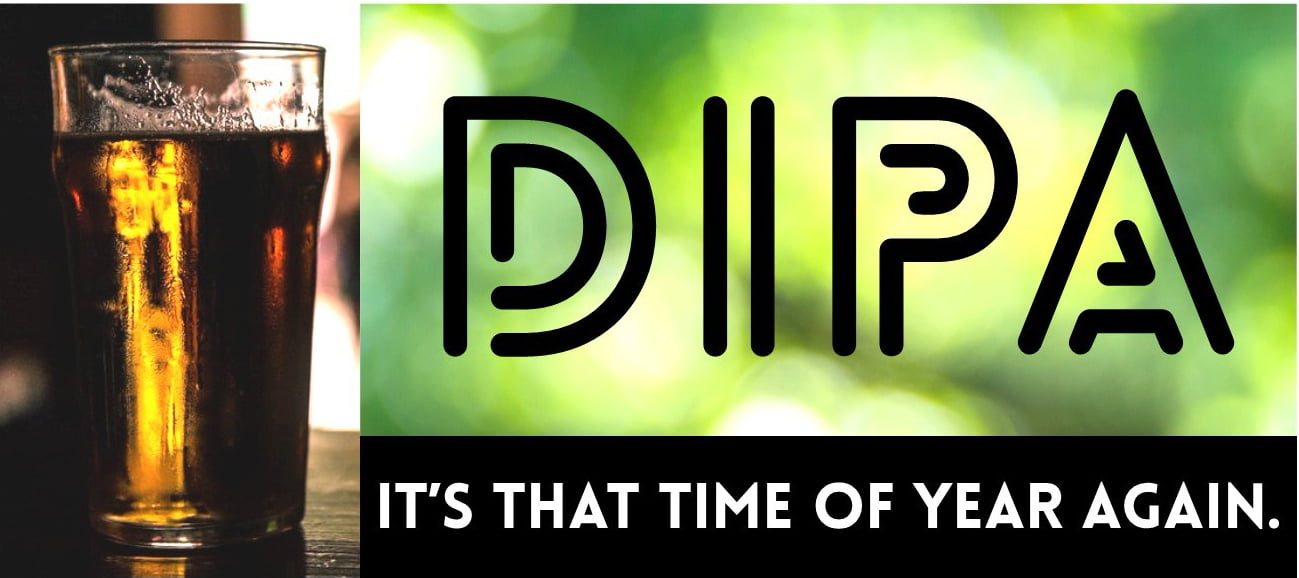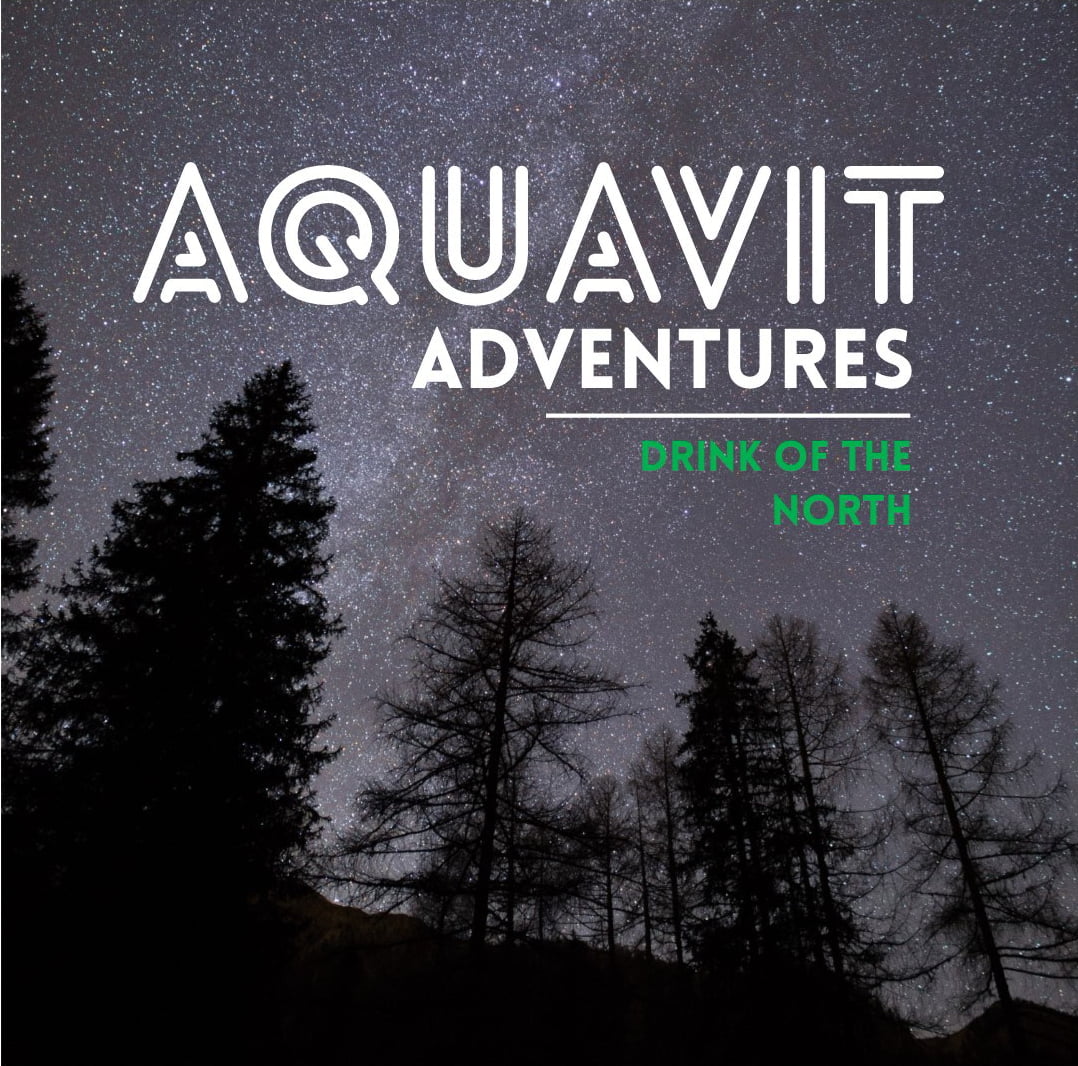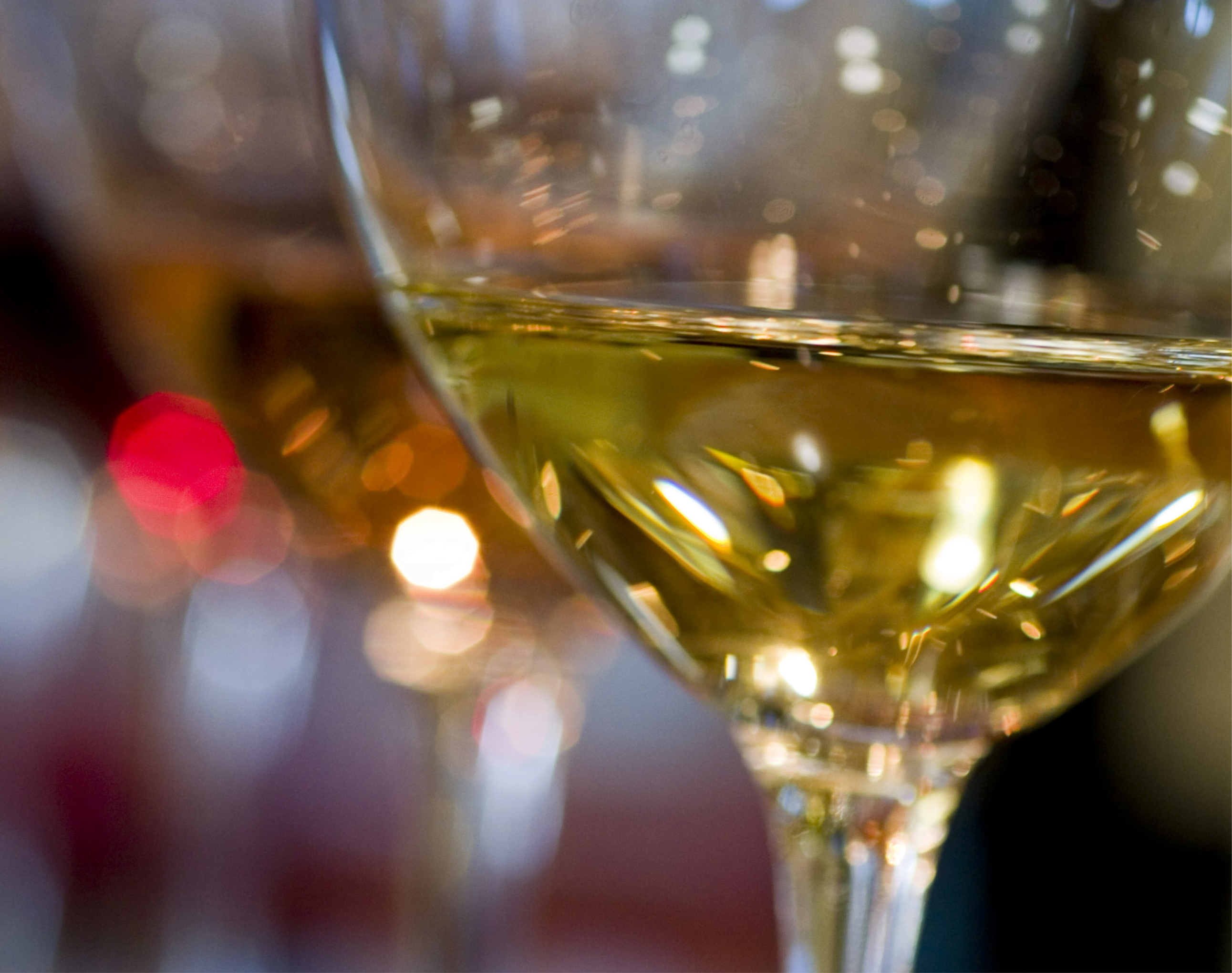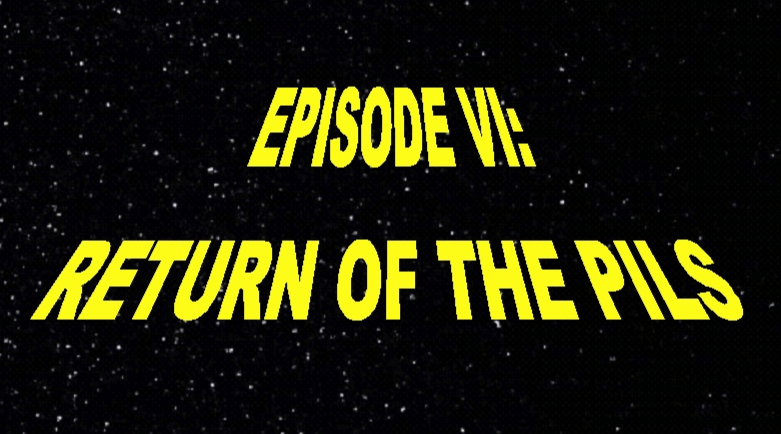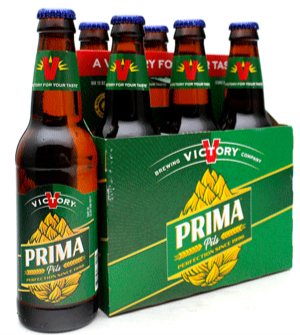The Double IPA is a liquid display of what it means to be American.
Continue readingAquavit Adventures: The Drink of the North
Aquavit is a spirit that originated in Scandinavia sometime in the 15th century. The name originates from the Latin phrase “aqua vitae,” meaning water of life. It’s made by adding herbs and spices to a neutral spirit distilled from potatoes or grain. Caraway is almost always the most prominent spice, but fennel, dill, coriander, anise or citrus are commonly added as well. The classic, well-known version of aquavit is Linie. Linie Aquavit gets its name from its aging process: casks are loaded onto ships that travel to the southern hemisphere and back, crossing the equator (linie) twice.
Here in Minnesota we have a large Scandinavian community that has long imbibed on this Viking elixir so much that there was a downtown bar (now closed) named “Aquavit.” Many of the names such as Aalborg left the market and almost the entire U.S. for about a half decade, prompting Minnesotans to step up and make their own. Here in store we have Aquavits from Brooklyn Park (Skaalvenn), Northeast Minneapolis (Tattersall), Duluth (Vikre), and New Richmond, Wisconsin (Gamle Ode); all with different flavor profiles and cask types. Aquavit is officially back, even Aallborg made its way back this year!
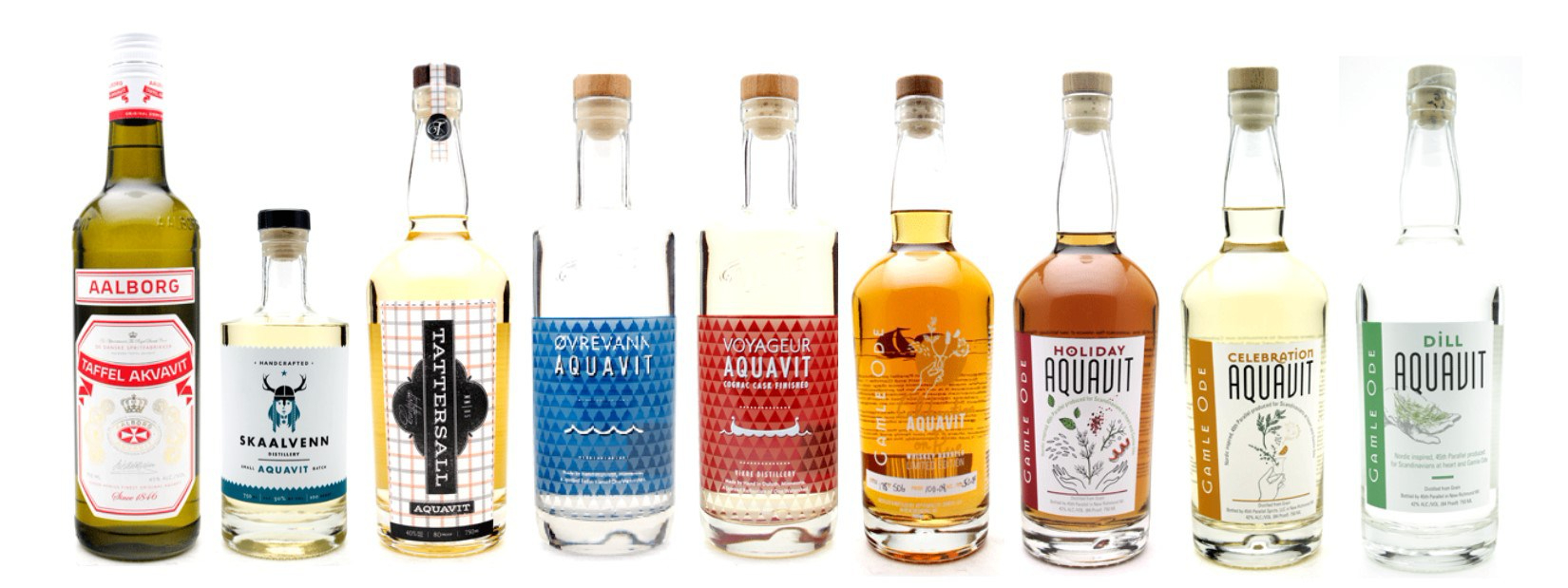
Historically it is consumed as an aperitif or digestif, (or right out of the freezer like my grandpa drinks it) but that doesn’t mean it can’t make a fun cocktail! Here a couple variations on 2 classics.
Aquavit Bloody Mary: “The Nordic Snapper”
The Bloody Mary is typically made with vodka. With tequila it becomes a Bloody Maria. With Gin you ask? A Red Snapper. This makes an Aquavit bloody a Nordic Snapper.
Use 2.5 oz of Tattersall‘s caraway-rye-bread-heavy Aquavit with 5oz of Cutwater’s horseradish heavy bloody mary mix for a savory spin on the brunch classic.
The “Viking Mule”:
Want some zip in your Moscow Mule? Skaalvenn’s caraway and fennel forward aquavit is boosted by a pinch of Thai chili pepper to keep the spices rolling across your palate.
2oz of Skaalvenn Aquavit with the all-natural Fever Tree Ginger Beer in a Moscow mule mug with a squeeze of lime is the perfect addition to watching a Viking Playoff game!

Fall Flavors
School has started, the leaves will be turning soon, and it is that time of the year to put on your favorite cardigan and sip some fine red wine. We have been quite busy here at France 44 preparing for one of our favorite times of the year. Our team has had a busy summer traveling to Croatia, Oregon, Spain, and, as I write this, Karina is out in sunny California.
Each of these places gave us great memories but even better experiences. We have had an amazing time getting to know the intimate details of all of these wonderful places we have visited recently, and now it is our time to share some of our findings with you!
This week we are presenting you some of our new fall favorite red wines from our travels, enjoy!

Croatia – Pilizota Plavina 2014 $15.99 On Sale!
Pilizota’s Plavina has really expressed its authentic Dalmatian characteristics: lively acidity, fresh red berries and fruit, moderate alcohol, a solid tannin structure, with a hint of chocolate and constant undertones of Dalmatian earthiness.

Oregon – Soter Vineyards North Valley Pinot Noir 2014 $34.99 On Sale!
Signature scents of ripe cane berries, dried fruits, spice and sandalwood dominate the aromatic profile. Silky on entry, the wine offers a burst of ripe berry flavors and vibrant acidity. It is juicy, fresh and mouth-coating with lovely, sweet fruit qualities. A core of black cherry lingers with hints of earth and game emerging on the palate. Beautifully balanced with richness, ample grip, fine persistence and minerality. Fine-grained tannins contribute to the drive and energy on the palate.

Spain – Ostatu Rioja Crianza 2014 $19.99 On Sale!
Vibrant raspberry and cherry aromas are complemented by fresh rose and peppery spices. Silky and fine-grained on the palate, offering intense red berry and bitter cherry flavors that become sweeter with air. Finishes spicy and very long, with harmonious tannins and lingering red fruit notes.

California – Round Pond Kith & Kin 2014 $35.99 On Sale!
Kith & Kin, Old English for “Friends & Family”, is a Cabernet Sauvignon sourced from all corners of the Napa Valley but with its heart rooted in Rutherford. This wine is meant to be approachable in its youth, with balanced tannins and a fruit forward character. The vast majority of fruit comes from our estate, supplemented by a limited amount from Napa Valley growers.
Perfect Local Pairings
Perfect Local Pairings
Here at France 44 we like to think outside the box for ideas on what to do with local craft spirits. Looking for a new cocktail to entice your taste buds? We’re always here to help. Here are a few super easy off the beaten path cocktail ideas to impress your friends as well as your palate!
Sharab Shrubs + Sociable Ciderwerks
Cider is a fantastic base for a cocktail, especially when you use something as dry as Sociable CiderWerks Freewheeler. Shrubs are growing exponentially on the coasts of America and while just starting the trend here in Minnesota, we have a few dedicated shrub makers here in town. Shrubs are drinking vinegars meant to be diluted with spirits, soda water, or any other liquid- cider, for instance! While Twisted Shrub makes an Apple Ginger and Sharab Shrub makes an Apple Rosemary, those are too on the nose. Why not try Sharab Shrub’s Strawberry to make strawberry cider or their Asian Pear Ginger Cinnamon to make a mulled cider? Perfect for the fall season!
Recipe
16oz Sociable Ciderwerks Freewheeler
0.5-1oz Sharab Shrub Strawberry or Asian Pear Ginger Cinnamon
Directions: Pour half the cider into the glass, add the shrub, pour the second half the cider, and enjoy!
Tattersall Distilling + Able Brewing
Local IPAs are among the top selling items in our store and it seems like the more citrus driven the better, so bring on the grapefruit. Northeast Minneapolis’ Able Brewing’s First Light IPA tastes like grapefruit incarnate, so we decided to spruce it up with a splash of Tattersall Grapefruit Crema! This perfect pairing is bright, fruity, and refreshing. Feeling like desert in a glass? Take Able’s Supergiant Golden Ale and add a splash of Tattersall’s classic Orange Crema to make an Orange Creamsicle Ale.
Recipe (Same as above)
12oz Able beer
3/4oz Tattersall Crema
Directions: Pour half the beer into the glass, add the crema, pour the second half the beer, and enjoy!
Dampfwerk Distilling + Panther Distilling
Dampfwerk Distilling is a brand new German inspired distillery with some American flair making all sorts of brandies, gins, and liqueurs, chief among them is their Helgolander Bitter Liqueur. Inspired by bitter herbal remedies originally made centuries ago, Helgolander is the perfect blend of sweet and bitter. Doesn’t this sound like its begging to be used as a liquored-up simple syrup in an Old Fashioned? Pairing it with one of Panther Distilling’s drier bourbons gives added sweetness and complexity to this classic drink while adding a local spin!
The Minnesota Old Fashioned
2oz Panther MN 14 Bourbon
0.5oz Dampfwerk Helgolander Liqueur
Garnish with an Orange Rind
Enjoy!
There are endless combinations of local products, here are a few ideas to get you started. Please come in and tell us your creations as well!
The Indiana Jones of Wine: Telmo Rodriguez
Rico Suave? Maybe. Meet Telmo Rodriguez–the Indiana Jones of wine.
Continue readingBrunch Like You Mean It
“Brunch” and “Sunday” go together like orange juice and Prosecco—really, they were made for each other. We’ve put together some of our favorite brunch cocktails for you, including no-fail classics as well as new twists on old stand-bys. Cheers to brunching!

Tattersall Mimosa
Let’s take a classic cocktail and give it a local spin. Mimosas are synonymous with brunch. Our favorite take on this bubbly beverage is to add an extra part of Tattersall Orange Crema with your dry bubbles and fresh squeezed orange juice.
Recipe:
- 4 Parts Dibon Cava
- 1 Part Tattersall Orange Crema
- Splash of fresh squeezed Orange Juice
For a twist: You could always substitute Tattersall Grapefruit Crema and grapefruit juice if you don’t mind some tartness!

Breakfast Old Fashioned
A few times a year our Liquor Buyer Tom throws a fancy brunch where every person is in charge of a different part of the morning/afternoon. His is always his Breakfast Old Fashioned. Maple syrup and bourbon: who could say no?
Recipe:
- 2 Parts Eagle Rare 10 year Bourbon (cherry vanilla forward)
- 1 Part Sortilege Maple Liqueur
- 5 Dashes of Fee Brothers Walnut Bitters
- Garnish with an orange peel
For a twist: Make a Brandy Breakfast Old Fashioned with Copper & Kings toasty vanilla-forward profile!
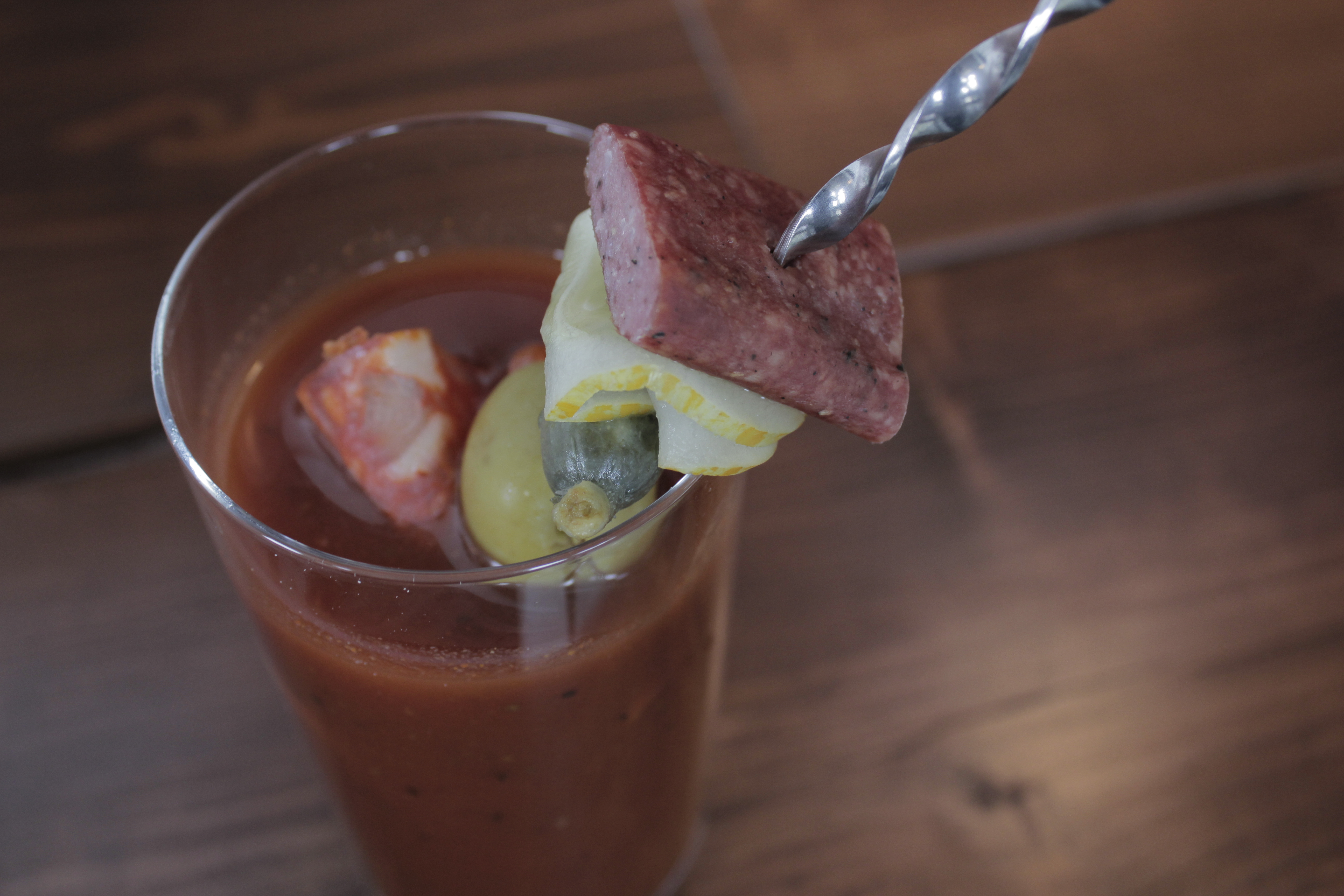
Bloody Mary, duh…
Bloody Marys are the quintessential brunch cocktail. It’s the best way to start the day, especially if you had a rough night the evening before. Here at France 44 we thoroughly enjoy a few different bloody Mary mixes, including Cutwater Bloody Mary Mix. Previously known as Ballast Point Bloody Mary Mix, this mix is jam-packed with flavor–most notably horseradish. Another crowd-pleaser is Nan’s Bloody Mark Mix, which is so tomato-forward you could almost make a sloppy joe with it!

Recipe:
- 2 Parts Skaalvenn Vodka
- 5 Parts Cutwater or Nan’s Bloody Mary Mix
- Garnish with a celery stalk and a thick strip of bacon
For a twist: Substitute Aquavit for a spicy take! Use Tattersall if you enjoy caraway, or Skaalvenn if you don’t mind a little black pepper and anise.
Wine Lies: What’s In A Name?
Question: Would a Moscato taste as sweet by any other name?
Answer: No… but it’s complicated.
It’s become a trend for Wine 101 posts to champion the forgotten and disparaged grapes of the world. In the past, we’ve gone to bat for Riesling and Merlot. There will always be bad wine in the world, and some of it is indeed Riesling and Merlot. Bad wine should be punished and run out of town. But don’t be prejudiced in your disgust—be disgusted only where disgust is merited. Not all Riesling is headache-inducing and cloyingly sweet. Not all Merlot tastes like Welch’s grape juice ramped up with alcohol and sawdust. There’s bad wine everywhere. But… there’s also good wine everywhere. And championing good wine is what Wine 101 is all about.
This time we’re bringing two completely opposite—yet still somehow devastatingly connected—wines to the fore. Here’s a little math to get us going:
MUSCADET ≠ MUSCAT/MOSCATO.
MUSCAT (France, Germany, etc.) = MOSCATO (Italy).
BUT…
MUSCAT does not always = sweet!
(Only after you’ve memorized those three axioms will you be allowed to proceed.)
Muscadet does not equal Moscato.
The idea that a region in France (Muscadet—pronounced MOOSE-ka-day) is the same as an Italian grape and wine style is one of the most unfortunate falsehoods in the wine world. I don’t know who was in charge of naming things at the Beginning of Wine (thanks, Bacchus), but they messed this one up pretty good. Muscadet (and more precisely, the sub-region of Muscadet Sevre et Maine) is an area located in the western part of France’s Loire Valley, just before the Loire River spills into the Atlantic Ocean. The most important grape grown there is called Melon de Bourgogne which, as you can imagine, doesn’t exactly have roots in the Loire Valley. Melon (mel-OWN) is one of the many offspring of Pinot Noir and Gouais Blanc, which makes it siblings with Chardonnay. Just like Chardonnay, it’s a fairly hardy grape that can grow well in cooler climates—an important feature for trying to make wine in northern regions like Burgundy and the Loire. Melon made the trek from Burgundy to the Loire around the early 18th century. Dutch traders needed a sturdier grape to withstand the cool coastal temperatures after their delicate red grape vines all froze and died during one particularly frigid winter. The Dutch planted scads of it, with the aim of shipping it up to the Netherlands to be made into brandewijn.

Today, Melon has become inseparable from its secondary coastal home. You’ve heard the saying, “What grows together, goes together”—think Muscadet and fresh oysters! This dry, fresh, mineral-driven wine is a perfect match for the saline notes found in oysters and other seafood dishes. Domaine de la Bretonniere makes a lights-out example—one with delicate orchard fruits, a zippy lemon note, and a whole lot of stony, salty, tanginess that will have you reaching for that 10th oyster and a second bottle.
Muscat (France, Germany, etc.) equals Moscato (Italy).
Ah, language. I say potayto, you say potahto. I say Pinot Gris, you say Pinot Grigio. Same story with Muscat and Moscato—it all depends on which country you’re standing in. But if we’re playing the “who said it first” game, the Italians have the upper hand. Moscato Bianco is also known as Muscat Blanc a Petits Grains—the noblest and oldest of all the 200+ Muscat varieties. It was one of the first grapes to be identified and cultivated because it had such a distinctive aromatic quality and delicious taste, which logically  attracted animals and humans to it. Today, Moscato is known worldwide as a light, frothy, pleasantly sweet wine with a pretty low alcohol content. But buyer beware: there’s a difference between Asti Spumante (or just “Asti”) and Moscato d’Asti! Asti Spumante is a marketing invention that has become the libation of choice for young drinkers, sorority girls and slumber parties around the globe. It’s sticky sweet, has more froth than flavor, and surprisingly higher in alcohol than its more traditional counterpart. Moscato d’Asti, on the other hand, is a beautifully balanced, fruity, lightly sparkling wine
attracted animals and humans to it. Today, Moscato is known worldwide as a light, frothy, pleasantly sweet wine with a pretty low alcohol content. But buyer beware: there’s a difference between Asti Spumante (or just “Asti”) and Moscato d’Asti! Asti Spumante is a marketing invention that has become the libation of choice for young drinkers, sorority girls and slumber parties around the globe. It’s sticky sweet, has more froth than flavor, and surprisingly higher in alcohol than its more traditional counterpart. Moscato d’Asti, on the other hand, is a beautifully balanced, fruity, lightly sparkling wine  with a more moderate amount of sweetness. The Moscato grapes are pressed, fermented until the alcohol level reaches just 5.5%, and then the juice is chilled and filtered immediately. The unfermented sugar left behind gives the wine a gently sweet character, and is packed full with ripe peach, orange blossom, ginger, mango, and candied nectarine. The production level of Asti Spumante outweighs Moscato d’Asti 3 to 1, but it’s well worth seeking out the slightly more expensive (but much better quality) Moscato d’Asti. Pick up a bottle of Vietti Cascinetta Moscato d’Asti for your next weekend brunch.
with a more moderate amount of sweetness. The Moscato grapes are pressed, fermented until the alcohol level reaches just 5.5%, and then the juice is chilled and filtered immediately. The unfermented sugar left behind gives the wine a gently sweet character, and is packed full with ripe peach, orange blossom, ginger, mango, and candied nectarine. The production level of Asti Spumante outweighs Moscato d’Asti 3 to 1, but it’s well worth seeking out the slightly more expensive (but much better quality) Moscato d’Asti. Pick up a bottle of Vietti Cascinetta Moscato d’Asti for your next weekend brunch.
 France does things a little differently with Muscat. The northeastern region of Alsace does it dry, and thinks it’s so cool that it’s listed as one of the 4 noble grapes of Alsace. Southern France has oodles of it, but makes it in a plethora of styles. One of the most common styles comes from the little village of Beaumes-de-Venise, located in the region of Vaucluse. Here, Muscat is made into a vin doux naturel—a sweet, fortified dessert wine. Domaine de Durban’s Muscat de Beaumes-de-Venise has a thick, honeyed texture with aromas of baked apple, pear, dried honey, and a bitter floral note on the finish. Pair this affordable dessert wine with strawberries and cream for Wimbledon this summer.
France does things a little differently with Muscat. The northeastern region of Alsace does it dry, and thinks it’s so cool that it’s listed as one of the 4 noble grapes of Alsace. Southern France has oodles of it, but makes it in a plethora of styles. One of the most common styles comes from the little village of Beaumes-de-Venise, located in the region of Vaucluse. Here, Muscat is made into a vin doux naturel—a sweet, fortified dessert wine. Domaine de Durban’s Muscat de Beaumes-de-Venise has a thick, honeyed texture with aromas of baked apple, pear, dried honey, and a bitter floral note on the finish. Pair this affordable dessert wine with strawberries and cream for Wimbledon this summer.
Muscat does not always = sweet!
As we just mentioned, Alsatian Muscat is revered not for its sugar, but for the lovely floral perfume that it provides. And other wine regions capitalize on this part of Muscat, too: the Spanish producer Avinyo makes a dry, slightly-sparkling version that they term “vi d’agulla,” which is Catalan for “prickly wine.” Grown in calcareous clay and  fermented in stainless steel to preserve the fresh, mineral quality of the wine, it’s hands-down one of the most beloved spring and summer sippers we’ve come across. Freshly-picked green apple, delicate white wildflowers and a hint of edgy menthol fly out of the glass. This wine is more fully fermented than what you’ll find in Moscato d’Asti (and therefore much drier), putting it up around 10.5%. It’s gulpable, refreshing, and ultra-flexible with food—three of the many reasons we stock up on this delightful wine as soon as the first snowflake melts.
fermented in stainless steel to preserve the fresh, mineral quality of the wine, it’s hands-down one of the most beloved spring and summer sippers we’ve come across. Freshly-picked green apple, delicate white wildflowers and a hint of edgy menthol fly out of the glass. This wine is more fully fermented than what you’ll find in Moscato d’Asti (and therefore much drier), putting it up around 10.5%. It’s gulpable, refreshing, and ultra-flexible with food—three of the many reasons we stock up on this delightful wine as soon as the first snowflake melts.
Lesson #1: Muscat, Moscato, Gelber Muskateller, Moscatel—whatever you may call it, it deserves respect. There’s a reason this grape has a spot at the top of history’s list of noble varieties that have stood the test of time.
Lesson #2: Don’t confuse Muscat (as wonderful as it can be) with Muscadet! Even though the names sound way too similar, this is worse than getting Sarah Michelle Gellar and Mister Ed confused for each other. Muscadet is bone dry and goes great with oysters. Muscat is (sometimes) sweet and goes great with pancakes.
Two cheers (separately and in different parts of the building) for Muscat and Muscadet!
Return of the Pils
A short time ago in a galaxy not so far, far away…
Luke Skybrewer has returned to his home planet of Earth in an attempt to rescue his favorite style, Pilsner, from the clutches of the vile gangster Jabba the HuttWeiser.
Little does Luke know that the Galactic Macro-Empire has secretly begun construction on a new armored marketing campaign even more powerful than the dreaded “Most Interesting Man in the World.”
When completed, this ultimate weapon will spell certain doom for the small band of craft brewers struggling to restore freedom to the galaxy…
—————————————————————————————————————————————–
Pilsner: the template for the most consumed style of beer in the world, it has become near synonymous with lager, and most current industrial examples lack any resemblance to the original. What is to become of the dwindling few of authentic but battle-scarred pilsners? Let’s wind the clock back a bit.
In the mid-19th century, Bohemian brewers were searching for a way to recreate a Bavarian-style lager in their hometown of Plzeň. The result was revolutionary. Czech ingredients proved to be the defining character of the crisp, honey-hued beer that poured forth. Locally grown Saaz hops contributed a spicy, grass-like aroma and soft, seamless bitterness. Moravian barley lent a lightly sweet graham-cracker like malt character to balance. And the biggest influence – the soft, sandstone-filtered Plzeň water – allowed the ingredients to speak. People were infatuated by its sharp, crisp taste and pillowy head of foam.
Though the Czechs can take the creative credit, there are three distinct variations of this hop-forward lager style. The original Czech pilsner has a deeper hue, with softer sweetish maltiness and a floral, grassy aromatic presence. German pilseners are more highly-attenuated (dry), earthy, with a more aggressive hoppy bitterness derived from a differing variety of hop selections. After these are the international pilsners, a category that encapsulates the macro-production pilsners we are familiar with today, ex. Heineken, Stella Artois. These beers offer a touch more sweetness and less substantial hop character for the sake of agreeability. Then there are adjunct lagers marketing themselves as pilsners, we’ll just skip that subject.
Over the last few decades, Pilsner has been a benchwarmer beer-style for craft brewers. Already comprising most of the world’s homogenized beer production, who needs yet one more Pils? It is a quaffing beer, not one on which craft brewing reputations are typically built. This once golden child of the brewing world has taken a long ride in the back seat…
Hush, did you hear that? There is change in the winds, my friends. From what I see as a reaction to the brazen, over-amped flavors of countless new releases, some craft brewers are pioneering the return of the Pils. Fruit-infused, hazy IPAs and barrel-aged stouts may be grabbing headlines, but a remarkable pilsner can be the unbreakable foundation upon which breweries stand the test of time. The popularity of juicy hop flavor and massive vanilla-laden oak may wax and wane, but pilsner is forever. Crisp, clean, and invigorating on the palate, with distinct noble hop character and delicate malt balance, pilsner is bringing fame back to lagers.
—————————————————————————————————————————————–
Try a few of our France 44 favorites:
Indeed B-Side Pils – $8.99/6pk (German-style Pilsener)
flowery/orange zest aroma, crackery malt, bitter hop, delicate effervescence
Fair State Pils – $9.49/4pk (German-style Pilsener)
spicy/earthy hop, super clean malt, brisk finish
BauHaus Wonderstuff Neu Bohemian Pilsner – $8.99/6pk or $16.99/12pk (Czech-style Pilsner)
citrus hop, smooth malt, balanced
Bent Paddle Venture Pils – $10.49/6pk (German-style Pilsener)
lemon/grassy hop, clean malt, easy finish
Founders PC Pils – $8.99/6pk or $16.99/15pk (American-hopped Pils)
punchy “C” hops citrus/pine aroma, pleasantly crisp/clean malt, hop kick finish
Victory Prima Pils – $9.49/6pk (German-style Pilsener)
spicy/herbal hop, biscuity malt, spicy/bone dry finish
Pilsner Urquell (The Original Pilsner) – $7.99/4pk (Czech Pilsner)
herbal hop, full honey nut malt, lightly bitter finish
 Weihenstephaner Pils – $10.99/6pk (German Pilsener)
Weihenstephaner Pils – $10.99/6pk (German Pilsener)
firm noble hop aroma, dry bready malt, assertively bitter finish
Coming Into Wine Consciousness: Looking “Sideways” at Merlot
How could a 5-second clip from a tawdry 2004 movie devastate an industry? But it didn’t. We just missed the point.
Continue readingDeconstructing Wine: Rosé
In a way that no one could have ever predicted, rosé has become a cultural symbol of “the good life.”
Continue reading